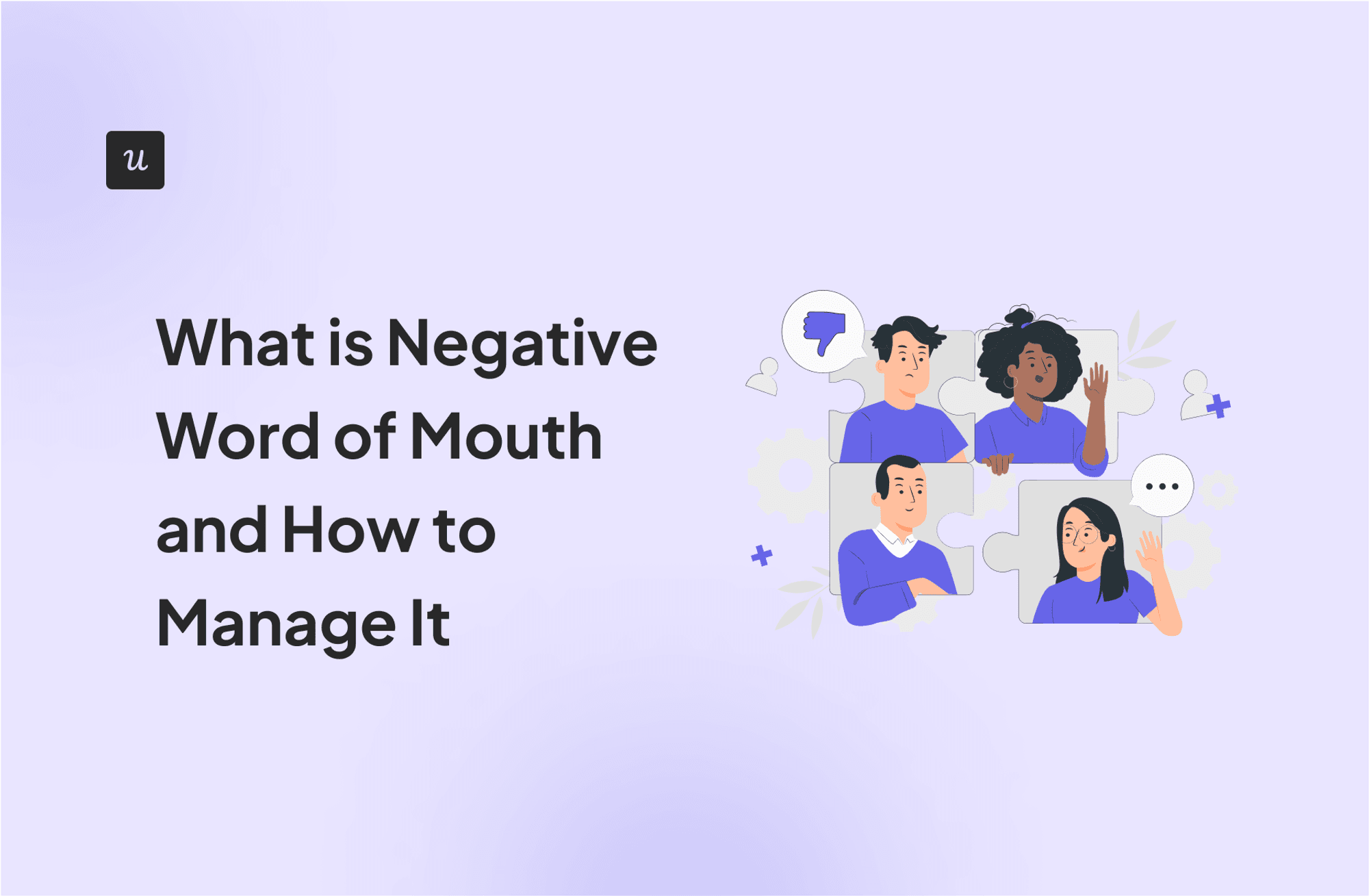
What is negative word of mouth?
Negative word of mouth is the spreading of unfavorable or critical information about a product, service, brand, or company through informal communication channels, such as personal conversations or online platforms.
This type of communication can significantly damage a company’s reputation, deter potential customers, and lead to a decline in customer acquisition and market share
Try Userpilot Now
See Why 1,000+ Teams Choose Userpilot

Impacts of negative word of mouth
When customers share their poor experiences with others, it can ripple through a community, both online and offline, creating substantial challenges for companies. Here are some of the impacts:
- Customer churn: Customer churn refers to the rate at which customers stop doing business with a company. Negative word of mouth can accelerate this process as potential and existing customers lose confidence in the product or service.
- Decreased customer satisfaction: Negative word of mouth can diminish overall customer satisfaction by fostering a negative perception, even among those who have not personally experienced issues. This creates a pessimistic atmosphere where customers are more critical and less forgiving of minor mistakes, ultimately reducing their satisfaction and loyalty.
- Lost sales: Potential customers who hear negative feedback about a company are less likely to make a purchase, resulting in lost sales and reduced revenue. This can be particularly damaging for new businesses trying to establish a customer base.
Common reasons behind negative word-of-mouth
Negative word of mouth happens for several reasons, some of which may be peculiar to the affected company. However, here are some of the most common reasons:
- Poor customer service: This is a leading cause of negative word of mouth. When customers feel neglected, disrespected, or dissatisfied with the assistance they receive, they are likely to share their frustrations with others. Inconsistent customer service, unhelpful staff, and slow response times contribute significantly to these negative perceptions.
- Product issues: When a product fails to perform as advertised or experiences frequent downtime, customers feel frustrated and may warn others within their professional networks or online communities, which can damage the brand’s reputation.
- Unfair practices: Hidden fees, deceptive advertising, or price gouging can leave customers feeling cheated and exploited. Such practices not only lead to immediate dissatisfaction but also create a long-lasting negative impression of the company.
- Bad communication: A lack of communication, especially regarding product updates or app maintenance, can frustrate customers and lead to negative word of mouth.
How to handle negative feedback
Negative feedback is inevitable, but it’s how you respond that matters. The following strategies will help:
Acknowledge and take responsibility for customers’ negative experience
The first and crucial step is to acknowledge the customer’s poor experience. This means actively listening to their concerns, empathizing with their frustration, and validating their feelings.
It’s crucial to respond promptly, as a delayed response is just as detrimental as no response. Consider the following example: Mixpanel’s response addressed the user’s problem, but it arrived months later—ample time for the user to have switched to a different vendor.

Offer a solution to resolve the issue
If negative feedback comes through in-app surveys, you can use tools like Userpilot to set conditional follow-ups and trigger in-app messages that address the user’s problem.
For example, imagine you asked users to rate a new feature’s ease of use. You can have a conditional flow that identifies low ratings, acknowledges the user’s frustration, and offers to provide an interactive guide:

Learn from the feedback for improvements
Negative feedback, while unpleasant, can be a valuable learning opportunity. Take the time to analyze the feedback and identify any patterns or trends.
You can use NPS response tagging to group common complaints for easy analysis:

Use the feedback to make product improvements and create more delightful user experiences.
How to increase customer satisfaction to drive positive word-of-mouth
Satisfied customers are more likely to make repeat purchases and share positive word of mouth about your brand. Let’s explore some effective strategies for making this happen:
Actively seek customer feedback and act on it
Don’t wait for customers to complain; proactively seek their feedback through surveys or social media. Encourage them to share their experiences, both positive and negative, and pay close attention to what they say.
One of the best ways to approach this is to trigger interaction-based in-app surveys that let users share their thoughts contextually. For instance, you can ask users to rate their experience with a new feature immediately after they interact with it. This way, you can address any complaints before they reach social media or review sites.

Incentivize loyal customers for positive reviews
Identify loyal customers through NPS surveys (those who rate you a 9 or 10), and trigger in-app messages after positive interactions, asking them to leave a review on social media or platforms like G2.
You can encourage them by providing rewards like discounts or exclusive access to premium features.

Another approach to consider is to select a few power users and interview them. Then, turn those interviews into case studies to post on your website and social media platforms.
Monitor customer behaviors to improve customer experience
Conduct a thorough funnel and user path analysis to gain deep insights into user interactions with your product. Identify any drop-off points and delve into the underlying reasons for these lapses.
Once you pinpoint the causes of user friction, swiftly implement effective solutions to enhance the user experience. For instance, you might discover that users often disengage when using a feature that requires frequent manual data entry.
Automating this process or reworking the interface could dramatically reduce drop-off rates and boost overall user satisfaction.

Conclusion
Ultimately, managing negative word of mouth boils down to putting the customer first. By prioritizing exceptional service, valuing feedback, and quickly addressing concerns, you can cultivate a loyal customer base that acts as a powerful counterforce to negativity.
Userpilot can help you turn this strategy into reality. Book a demo to discuss how to build positive customer experiences that drive satisfaction and encourage users to spread the good word about you.







